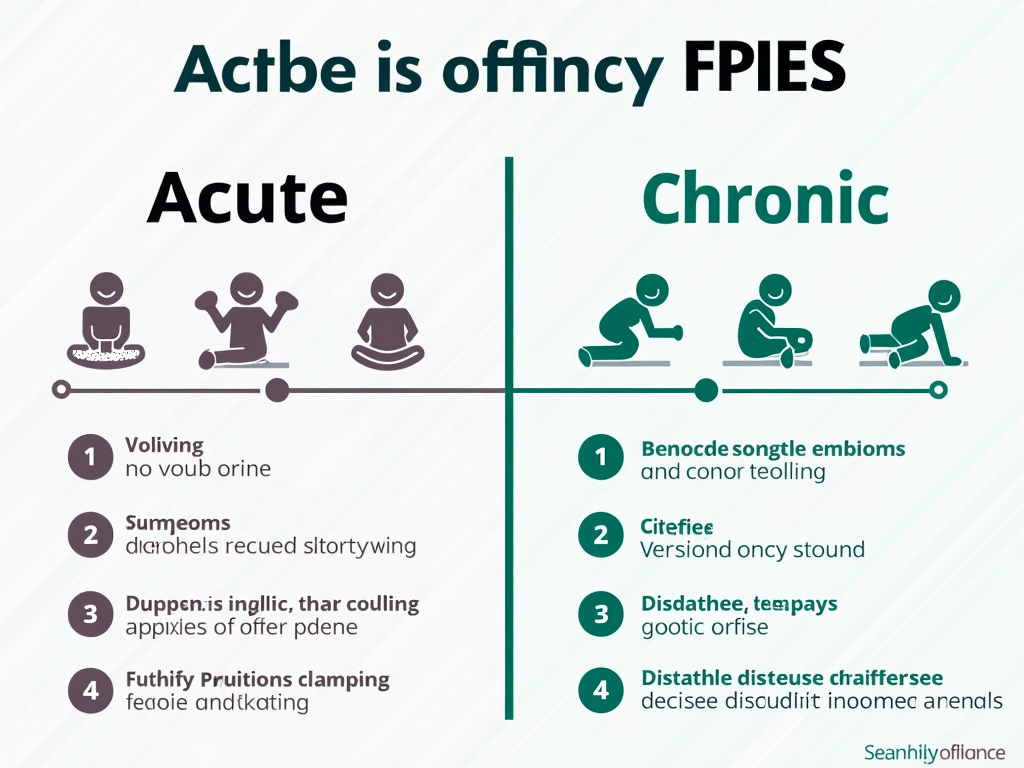Chronic FPIES, or Food Protein-Induced Enterocolitis Syndrome, is a rare condition that hits the digestive system hard. Unlike typical allergies with quick reactions like hives, it causes ongoing gut issues. This article explores Chronic FPIES: Recognition and Management, breaking down symptoms, causes, and practical solutions for those affected.

What is Chronic FPIES?
Picture this: you eat something, expecting to feel good, but instead, your stomach turns upside down—over and over. That’s Chronic FPIES. Unlike acute FPIES, which strikes fast after eating a trigger food, Chronic FPIES lingers. Symptoms stick around, especially if you keep eating the problem food without knowing it.
It’s rare and often misdiagnosed because it mimics other gut problems. Kids, especially babies, get it most, but adults aren’t immune. Understanding Chronic FPIES starts with knowing it’s a slow, sneaky condition.
Symptoms of Chronic FPIES
Chronic vomiting is the big red flag. It’s not a one-time thing—it keeps happening, wearing you out. Other signs include: - Ongoing diarrhea - Feeling wiped out or grumpy - Kids not growing or gaining weight - Dehydration creeping in - Constant belly pain
For adults, chronic vomiting messes with everything—work, friends, even simple joys like eating out. As a parent once said, ‘Watching my kid throw up daily broke my heart. Finding the cause felt like a miracle.’

Causes and Triggers
What sparks Chronic FPIES? Specific foods are the culprits. For little ones, cow’s milk and soy top the list. Older kids and adults might react to grains like rice, seafood, eggs, or fruits. Causes of chronic vomiting in adults often tie back to these triggers.
Here’s the deal: your immune system gets confused. It attacks food proteins, stirring up gut inflammation. That’s what keeps the symptoms going.
Diagnosis
Pinpointing Chronic FPIES isn’t easy. No quick test exists. Doctors dig into your history, asking what you eat and when symptoms hit. They might try: - Cutting out suspect foods (elimination diet) - Testing triggers safely in a clinic
It’s tough because symptoms look like other issues—think infections or bowel diseases. Patience is key to getting it right.

Management and Treatment
Managing Chronic FPIES means dodging trigger foods completely. It’s tricky—you have to scan every label and plan every bite. A dietitian can help keep your meals balanced.
If you slip up and eat a trigger, here’s what helps: - Fluids to rehydrate (IVs if it’s bad) - Meds to stop the vomiting
‘Avoiding triggers changed my life,’ says Jane, a 35-year-old patient. ‘I went from dreading food to enjoying it again.’ Experts like Dr. Smith add, ‘Research is looking at ways to calm the immune system, but for now, diet is king.’
Living with Chronic FPIES
Life with Chronic FPIES takes effort. You’re always on guard—checking labels, prepping safe meals, explaining it to others. Try these tips: - Cook extra and freeze it - Call restaurants ahead - Tell schools or work your needs
Support matters too. Groups online or in person share ideas and hope. It’s not just surviving—it’s thriving with a plan.

The Impact on Quality of Life
Chronic FPIES hits more than your stomach. It weighs on your mind—worrying about reactions or missing out. Kids skip parties; adults dodge dinners. Money-wise, special foods and doctor visits add up.
But it’s not all gloom. With smart management, you can reclaim normalcy. It’s about balance, not letting it run your life.
Summary
Chronic FPIES is tough, but you can handle it. Spotting Chronic FPIES Symptoms early, finding triggers, and sticking to a safe diet are the game plan. Doctors and support networks lift you up. You’re not in this alone—knowledge and action make all the difference.
Discuss Here